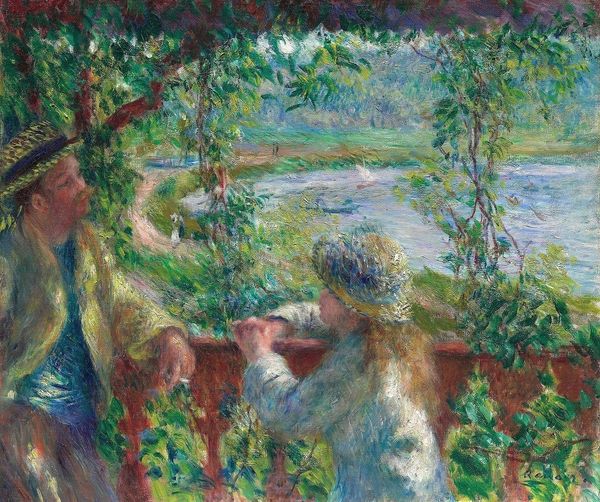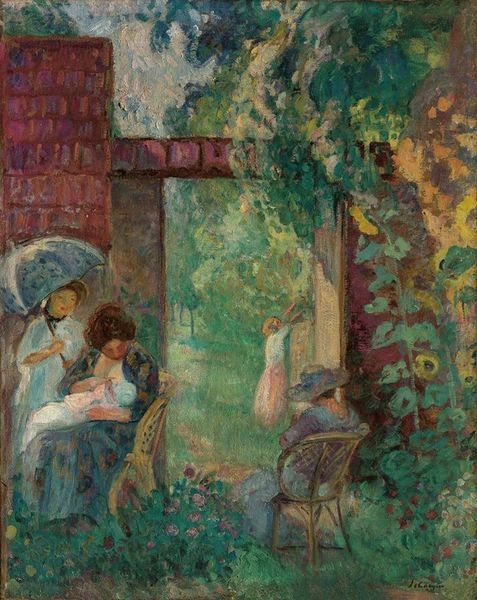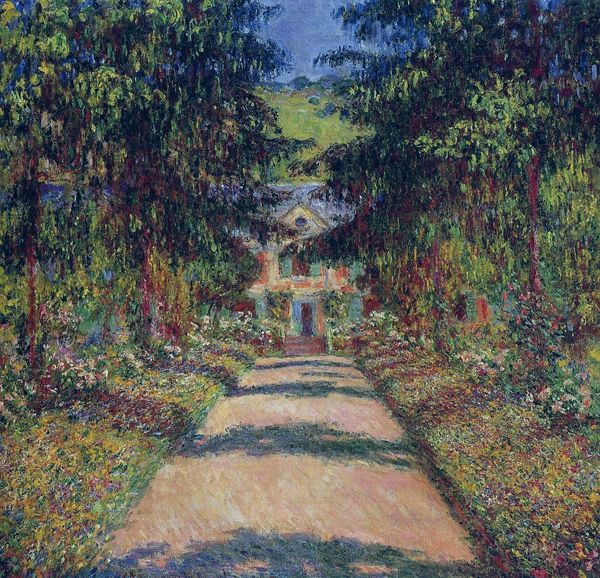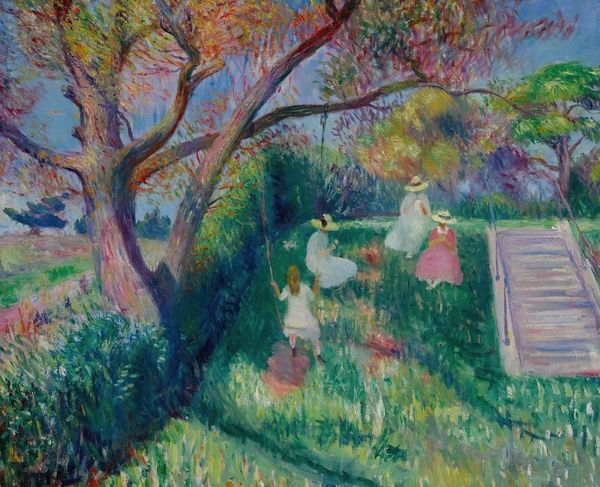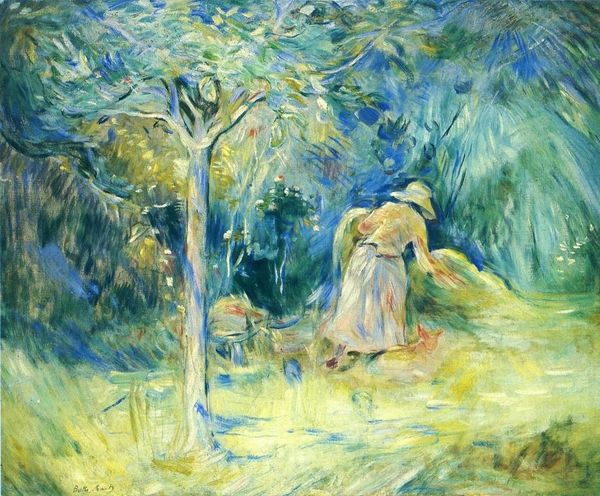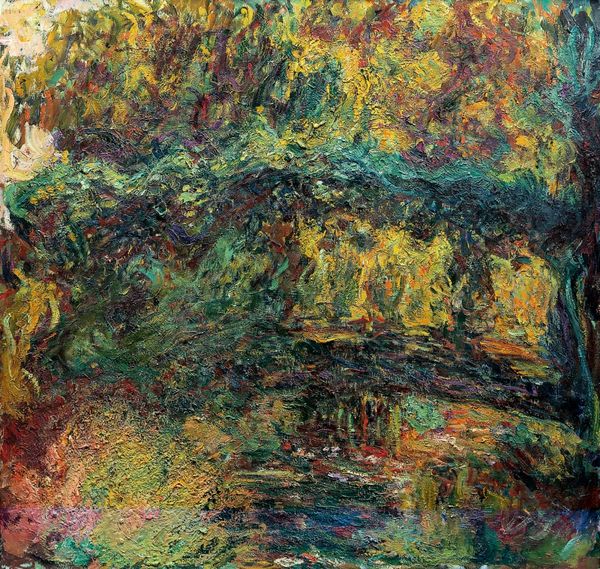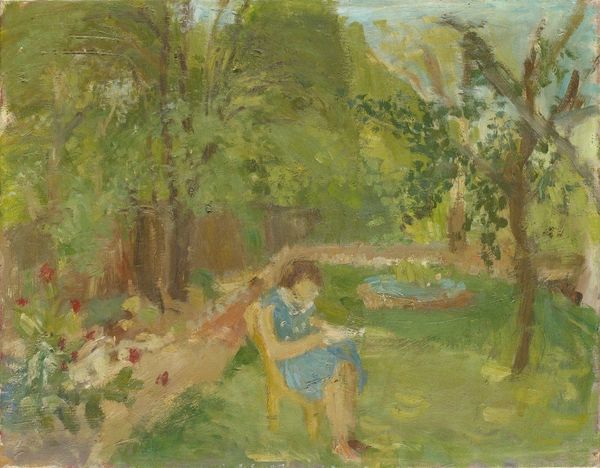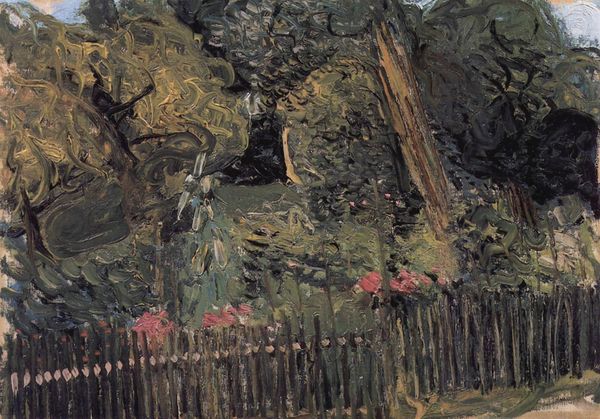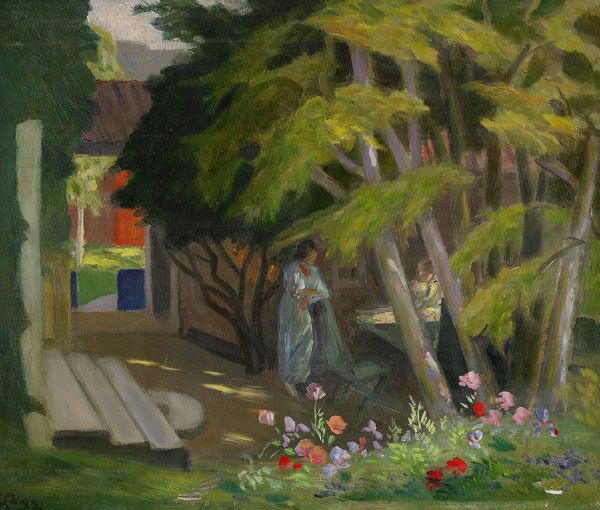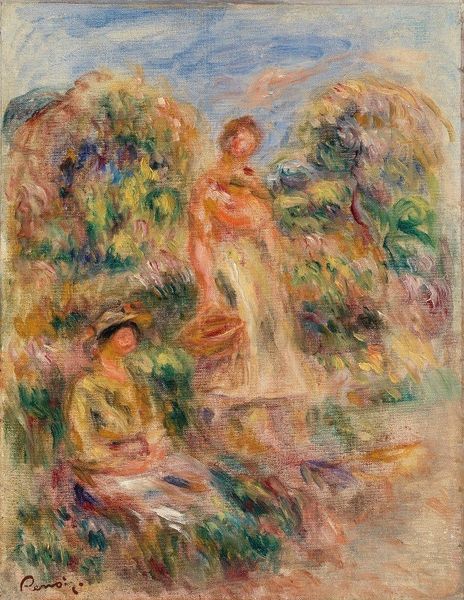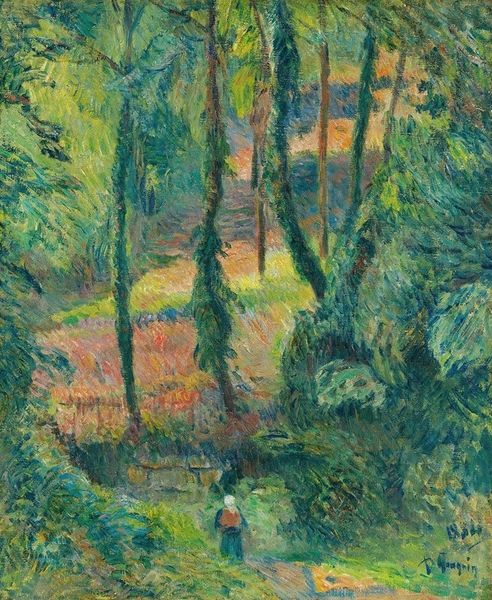
Copyright: Public Domain: Artvee
Curator: This is Frederick Carl Frieseke's "En Promenade," painted around 1908. There’s such a beautiful luminosity in how he captured this outdoor scene. Editor: Yes, I'm immediately struck by how overwhelmingly green it is—like a suffocation, almost, yet softened. It's an oppressive beauty, if that makes sense? Curator: It does. And Frieseke really dedicated himself to capturing light. The plein-air style and those broken brushstrokes reflect the techniques developed within Impressionism, emphasizing the fleeting effects of natural light. We have this landscape but also the figures as constructed through and transformed by the light. Editor: That’s key. The women become part of the landscape itself, really. It speaks to turn-of-the-century bourgeois leisure and how white, affluent women occupied these spaces – both literally and figuratively as a way to embody a certain aesthetic ideal. Are they props within this staged pastoral fantasy, or are they truly enjoying leisure that labor creates? The art doesn't necessarily give us the answers, right? Curator: Perhaps he saw it as capturing an experience; the material pleasure of simply being, and being outdoors. These are two women spending time together—he focuses on what materials can provide such as the flow of fabric, how the sunlight warms it…he creates that tactile experience on the canvas. I am particularly struck by his handling of paint around the parasol. The color is applied in thick layers so it nearly becomes sculpture. Editor: It is quite lovely, isn’t it? It also prompts a question of access, doesn’t it? How this particular type of leisure, so beautifully depicted here in oil on canvas, was facilitated through labor often made invisible. That idyllic experience was simply not possible for all women. Curator: I suppose by looking at what’s there – the visible labor of paint, and how it can emulate form and texture – the artwork asks that viewers explore questions beyond only what we are presented. Editor: Agreed, seeing how Frieseke manipulated those materials makes those societal considerations all the more vital. Curator: Definitely, thank you. It's these types of observations, blending materiality with more nuanced social commentary, that really allows the artwork to live and breathe for viewers today. Editor: A very fruitful perspective, thank you.
Comments
No comments
Be the first to comment and join the conversation on the ultimate creative platform.
